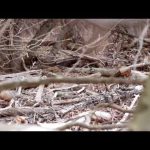Places – England – Stonehenge – Mysterious Stone Circles
From VOA Learning English, this is EXPLORATIONS in Special English. I’m Christopher Cruise.And I’m Kelly Jean Kelly. Today, we report on new knowledge about Stonehenge, the famous, ancient stone circles in southern England.
Laser technology has aided scientists with their knowledge of Stonehenge, the stone monument near the city of Salisbury, England. Most of the stones at Stonehenge stand in incomplete circles. One of the largest stones weighs about 40 thousand kilograms. Some stones are more than seven meters high. Others lie broken on the ground.
The mysterious stone formation has stood on the flat, windy Salisbury Plain for perhaps five thousand years. But the organization English Heritage used modern technology to solve some of that mystery.
Recently, researchers working for English Heritage reported what they found after directing lasers at some of the stones. The lasers showed bright gray-white surfaces under material collected on the stones over the ages. And the intense light seemingly identified an ancient secret.
Some people believe the designers of Stonehenge wanted to make the best showing possible of sunlight on the longest day of the year.
Tests with lasers also showed 71 images of axe heads. The images were carved into the stones. Researchers say the “artists” probably lived during the Early Bronze Age. That would have been about a thousand years after Neolithic people first worked on Stonehenge.
The lasers also showed graffiti and other damage done by 19th century visitors. At that time, people were permitted to remove pieces of the stones. They could pay workmen to break off pieces to take home as souvenirs.
Researcher Mike Parker Pearson, for example, says Stonehenge was built to help unite what now is eastern and western Britain.
Some human remains found near the stone circles show physical injury or disease. This helped lead two well-known researchers to propose that Stonehenge was a refuge or shelter for people with health problems
The archeologists base their theory of Stonehenge’s purpose partly on qualities of bluestones used at the monument. The stones are placed in a double circle with the entrance facing northeast. During the past century, the bluestones were shown to be from the Preseli Mountains in Wales. Their name comes from their color. Some people say the stones appear to be blue when they are wet or cut.
The archeologists note that some bluestones in modern Wales are still part of a healing tradition. In some places, people use water poured over the stones in an effort to cure sickness.
Another mystery is how people raised the stones to standing positions. Some weigh four tons.
One experiment used specially shaped stone balls. The balls were rolled on long pieces of wood. Each piece was cut like a rail or long bar. Professor Bruce Bradley of Exeter University reported that a demonstration using this method was successful. He said about 10 oxen could have moved as many as 10 stones a day up to 16 kilometers
For many years, experts thought ancient people stopped using Stonehenge and the area around it perhaps 3,500 years ago. But in 2000, British scientists learned that people may have come to Stonehenge much later. They identified human remains as those of a man executed there, and used radiocarbon-dating to find the time of his death. The finding was made because of a rediscovery.
Partial skeletons, sets of bones, of many people were unearthed in the 1920s and 1930s. One skeleton was identified as that of a man who was killed near Stonehenge.
The man died when he was hit with the sharp metal edge of a sword that cut off his head. The experts say he was about 35 years old at the time of his death.
Experts say the earliest the man could have been killed was about 2,100 years ago. About that time, people in Britain first started using iron. Or the man could have been killed during a Roman invasion several hundred years later. The Roman Emperor Vespasian supposedly executed local leaders by cutting off their heads. He may have been killed during wars between competing English kings.
The skeleton was first discovered in 1923. A British military officer named William Hawley dug it up from inside Stonehenge’s ancient circles. German bombs badly damaged the college during World War Two. Nineteen-thousand objects from its collection were taken to houses in the countryside for safe-keeping. They included the skeleton. After the war, it was returned to the medical school. But no one knew it was there. It was thought to have been destroyed in the bombing.
Leave A Reply
You must be logged in to post a comment.









 Paranormal
Paranormal

